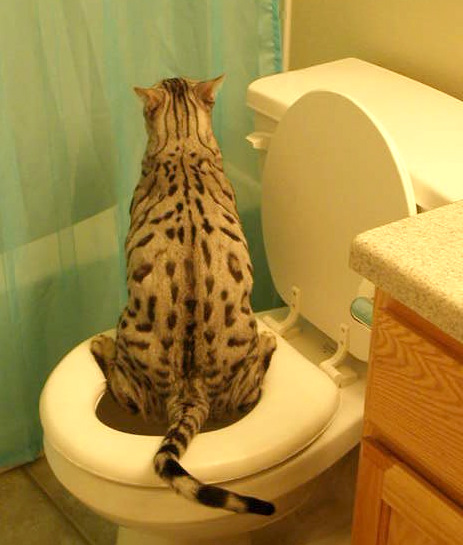Presented here below you will discover a good deal of excellent advice related to How to Dispose of Cat Poop and Litter Without Plastic Bags.

Introduction
As cat proprietors, it's vital to bear in mind exactly how we throw away our feline pals' waste. While it might seem practical to purge cat poop down the toilet, this method can have harmful repercussions for both the setting and human health.
Alternatives to Flushing
Luckily, there are more secure and much more liable means to dispose of pet cat poop. Think about the following choices:
1. Scoop and Dispose in Trash
One of the most common approach of taking care of cat poop is to scoop it into a naturally degradable bag and throw it in the garbage. Make certain to use a devoted clutter inside story and deal with the waste quickly.
2. Use Biodegradable Litter
Go with biodegradable pet cat clutter made from products such as corn or wheat. These litters are environmentally friendly and can be safely dealt with in the trash.
3. Bury in the Yard
If you have a yard, consider hiding feline waste in a designated area away from vegetable gardens and water sources. Make certain to dig deep adequate to prevent contamination of groundwater.
4. Install a Pet Waste Disposal System
Invest in a family pet garbage disposal system especially made for feline waste. These systems make use of enzymes to break down the waste, decreasing odor and ecological effect.
Wellness Risks
In addition to ecological worries, purging feline waste can additionally posture wellness threats to humans. Feline feces might include Toxoplasma gondii, a parasite that can create toxoplasmosis-- a possibly extreme ailment, especially for expecting ladies and individuals with weakened body immune systems.
Ecological Impact
Flushing cat poop presents dangerous microorganisms and parasites right into the water system, presenting a substantial threat to aquatic ecosystems. These contaminants can negatively influence aquatic life and compromise water top quality.
Final thought
Liable pet dog ownership extends past giving food and sanctuary-- it additionally involves proper waste monitoring. By avoiding purging pet cat poop down the toilet and going with different disposal methods, we can reduce our environmental footprint and shield human health.
Why Can’t I Flush Cat Poop?
It Spreads a Parasite
Cats are frequently infected with a parasite called toxoplasma gondii. The parasite causes an infection called toxoplasmosis. It is usually harmless to cats. The parasite only uses cat poop as a host for its eggs. Otherwise, the cat’s immune system usually keeps the infection at low enough levels to maintain its own health. But it does not stop the develop of eggs. These eggs are tiny and surprisingly tough. They may survive for a year before they begin to grow. But that’s the problem.
Our wastewater system is not designed to deal with toxoplasmosis eggs. Instead, most eggs will flush from your toilet into sewers and wastewater management plants. After the sewage is treated for many other harmful things in it, it is typically released into local rivers, lakes, or oceans. Here, the toxoplasmosis eggs can find new hosts, including starfish, crabs, otters, and many other wildlife. For many, this is a significant risk to their health. Toxoplasmosis can also end up infecting water sources that are important for agriculture, which means our deer, pigs, and sheep can get infected too.
Is There Risk to Humans?
There can be a risk to human life from flushing cat poop down the toilet. If you do so, the parasites from your cat’s poop can end up in shellfish, game animals, or livestock. If this meat is then served raw or undercooked, the people who eat it can get sick.
In fact, according to the CDC, 40 million people in the United States are infected with toxoplasma gondii. They get it from exposure to infected seafood, or from some kind of cat poop contamination, like drinking from a stream that is contaminated or touching anything that has come into contact with cat poop. That includes just cleaning a cat litter box.
Most people who get infected with these parasites will not develop any symptoms. However, for pregnant women or for those with compromised immune systems, the parasite can cause severe health problems.
How to Handle Cat Poop
The best way to handle cat poop is actually to clean the box more often. The eggs that the parasite sheds will not become active until one to five days after the cat poops. That means that if you clean daily, you’re much less likely to come into direct contact with infectious eggs.
That said, always dispose of cat poop in the garbage and not down the toilet. Wash your hands before and after you clean the litter box, and bring the bag of poop right outside to your garbage bins.
https://trenchlesssolutionsusa.com/why-cant-i-flush-cat-poop/

I recently found that write up on Can You Flush Cat Poo or Litter Down the Toilet? while browsing on the web. Do you know about anybody else who is fascinated about the topic? Be sure share it. I recognize the value of reading our article about Can You Flush Cat Poop Down The Toilet?.
More Details
Comments on “Reasons Flushing Cat Poop Down Your Toilet Isn't a Good Idea - Tips for Proper Handling”